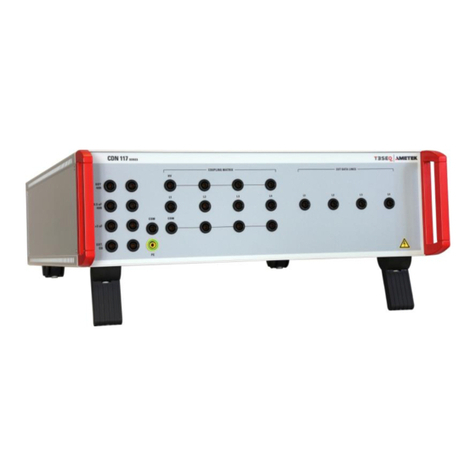
3
85-243826 E03
CONTENT
1. Safety advice ........................................................................................................................4
1.1. General......................................................................................................................................................4
1.2. Applicable safety standards.....................................................................................................................4
1.3. Safety symbols used on the product.......................................................................................................4
1.4. Installation.................................................................................................................................................4
1.5. Test execution ..........................................................................................................................................5
2. Unpacking, storage and transport.......................................................................................6
2.1. General......................................................................................................................................................6
2.2. Storage and transport ..............................................................................................................................6
2.3. Unpacking.................................................................................................................................................6
2.4. Scope of delivery......................................................................................................................................6
3. Description of the product................................................................................................... 7
3.1. General......................................................................................................................................................7
3.2. Functional schematic...............................................................................................................................7
3.3. Construction of the product.....................................................................................................................8
4. Application............................................................................................................................9
4.1. Setup.........................................................................................................................................................9
4.2. Coupling path to the pair under test (Jumper settings)........................................................................10
4.3. Power over Ethernet (PoE).....................................................................................................................12
4.4. One pair (two lines) application with DC and LF...................................................................................12
5. Verication..........................................................................................................................12
5.1. Voltage....................................................................................................................................................12
5.2. Current....................................................................................................................................................13
6. Technicalspecication .......................................................................................................14
7HFKQLFDOVSHFLFDWLRQVRI&’1+66..................................................................................................14
0HFKDQLFDOVSHFLFDWLRQVRI&’1+66 ..............................................................................................14
7. Maintenance.......................................................................................................................15
7.1. General....................................................................................................................................................15
7.2. Cleaning..................................................................................................................................................15
8. Disposal...............................................................................................................................15





























